News
Home | Greetings | Organization | Event |
Research | Quantum Materials Science | Quantum Optics | Ion Beam Science | Next-Generation Synchrotron Radiation Facility
Notification of Directorate Name and Institute Name Renaming
The Quantum Beam Science Directorate of the National Institutes for Quantum Science and Technology (QST) has been renamed the "Foundational Quantum Technology Research Directorate" as of April 1, 2023.
In addition, the Takasaki Advanced Radiation Research Institute has been renamed the "Takasaki Institute for Advanced Quantum Science", and the Kansai Photon Science Institute has been renamed the "Kansai Institute for Photon Science" as of July 1, 2023.
Greetings
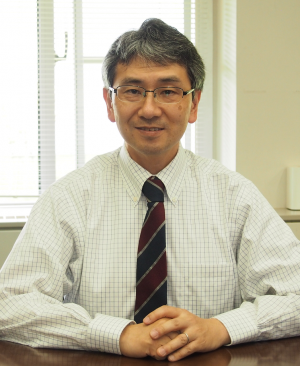
The Foundational Quantum Technology Research Directorate conducts research on the basis of quantum technology that supports the development of a wide variety of science and technology, such as atomic and electronic level analysis and visualization of materials and devices, ultra-fine microfabrication and the creation of advanced quantum functions in the materials. That is, we are conducting the R&D that comprehensively utilizes ion and electron beams, lasers and synchrotron radiation as well as the development and advancement of these beam sources. For this purpose, with Takasaki Institute of Advanced Quantum Science, Kansai Institute for Photon Science and Institute for Advanced Synchrotron Light Source in Sendai site as bases of research activities, we are promoting two research areas: The first is "Quantum Materials Science" aiming at establishment of quantum material and quantum sensing technologies that will lead the transformation to a super smart society and at development of energy conversion devices toward the realization of a carbon-neutral and recycling-oriented society, and the second is "Photon Science" aiming to clarify and control the functions of quantum materials using ultrashort pulse lasers, develop ultrafine processing technology, develop new quantum beam sources using ultrahigh intensity lasers and their application to various fields. We are also responsible for the development of a Next-Generation Synchrotron Radiation Facility, "NanoTerasu", through a public-private partnership, playing a leading role in the further development of quantum technology.
Your continued support and encouragement in our activities are greatly appreciated.
KAWACHI Tetsuya, PhD
Managing Director of Foundational Quantum Technology Research Directorate
Research Fields
Quantum Materials Science: Takasaki Institute for Advanced Quantum Science / Kansai Institute for Photon Science
Observe on a Quantum Scale and Create Innovative Quantum Materials and Devices
Creation of Innovative Quantum Devices
Using quantum beams, we create single-photon sources and spin-carrier materials that can be applied to quantum technologies. These innovative quantum devices will enable ultra-sensitive sensing, ultra-low energy consumption, and ultra-high-speed processing.
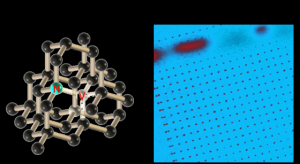
A single photon source (left) consisting of a nitrogen-vacancy (NV) pair in diamond. Photoluminescence from NVs formed at the desired position on the diamond substrate (right).
Observation with Advanced Quantum Beam Measurement
Advanced measurement technologies utilizing various quantum beams, such as synchrotron radiation and positron beams, accelerate researches of quantum materials science by observing the state of atoms and electrons constituting matter with high precision and by clarifying the nature of matter.
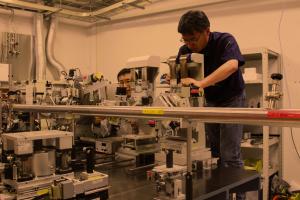
Ultra-high vacuum synchrotron Moessbauer system that enables observation of atomic scale magnetic and spin states
Creation New Functional Materials through Quantum Beam Molecular Processing
Through close collaboration with the industrial community, we enhance the quantum beam technologies, which we have developed over many decades, such as graft polymerization and crosslinking, to create new polymer materials that can be applied to advanced medical care and industrial development.
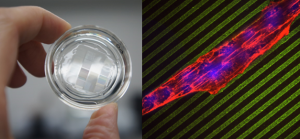
Medical polymer material (left) which formed the micro pattern on the surface by the crosslinking technique. A mass of cells (right) grown in a fixed direction on the material.
Quantum Optics: Kansai Institute for Photon Science
The Quest for Future by Lasers
Challenge to Ultra-High Field Science
We attempt to elucidate relativistic phenomena in ultra-high fields that can only be created by high-intensity lasers, observe ultra-high speed phenomena using ultra-short pulse lasers, and perform cutting-edge science such as material control.
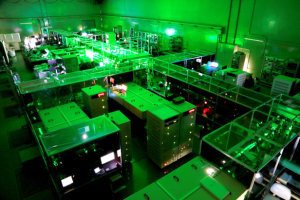
The world‘s leading high-intensity laser, J-KAREN. By confining 30 J of laser energy in a time of 30 femtoseconds (1 femto is 1/(1000 trillion)), an ultra-high intensity of 1 petawatt (=1000 trillion watts) can be achieved.
Creating a Safe and Prosperous Future
We contribute to the realization of a prosperous and safe future through the development of medical and industrial application technologies with lasers that support everyday life and the social implementation of the results of QST-certified venture companies.
Development and practical application of non-invasive blood glucose sensor using infrared laser technology

Light Touch Technology Inc., a QST-certified venture company (Approved in July 2018).
Development of automatic, remote, and high-speed diagnostic technology for internal defects in concrete by laser hammering method
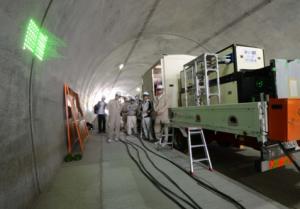
PhotonLabo co., Ltd., a QST-certified venture company (Approved in June 2019).
Ion Beam Science: Takasaki Institute for Advanced Quantum Science
“Life and Living” bred by Ion Beams
Development of Innovative Technologies
We develop state‐of‐the‐art technologies using ion beams that contribute to medicine, the environment, and energy, including the in-air micro-PIXE analysis technique that can measure the elemental distribution with a spatial resolution of 1 micron.
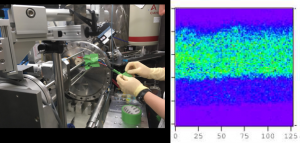
Lithium distribution (right) in an electrode (35 μm thin) of lithium ion battery was measured by micro-PIXE/PIGE analyzer (left).
Contribution to Food and Agriculture
In order to realize a sustainable society, we use ion beam mutagenesis and RI imaging to help secure food resources through genome design.
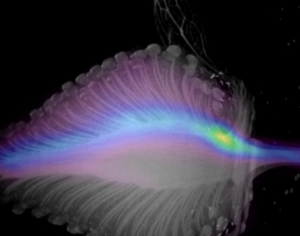
Movement of photosynthates in a strawberry by RI imaging using C-11
Underpinnings of Medical Innovation
With the aim of innovating cancer therapies, we develop novel anti-cancer drugs with radioisotopes produced by accelerators, and clarify the mechanism of cancer cell killing.
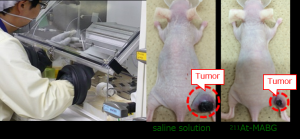
Synthesis of Astatin-211 labeled anti-cancer drug (left) and therapeutic effect on pheochromocytoma model (right)
Next-Generation Synchrotron Radiation Facility: Institute for Advanced Synchrotron Light Source
Synchrotron Radiation facility for Cutting-Edge Academic Research and Diverse Industrial Applications
Construction through a “Public-Private Partnership"
As the national body for the development and operation of the Next-Generation Synchrotron Radiation Facility, we promote the development of the facility in cooperation with regional and industrial partners.
Partners: Photon Science Innovation Center (Representative body, abbreviated as PhoSIC), Miyagi Prefecture, Sendai City, Tohoku University, Tohoku Economic Federation
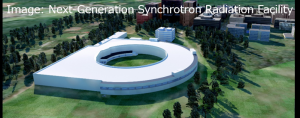
It can measure the light elements with high sensitivity and can meet various needs from basic science to industrial application, such as research and development of magnets and spintronics elements, drug discovery and development of new highly active catalysts.
Convenient Location at Tohoku University's Aobayama New Campus
It is planned to be built on the Aobayama new campus of Tohoku University, a nine-minute subway ride from Sendai Station. We will establish a new scheme for industry-university collaboration and aim to build a research complex at one of the best locations in the world.
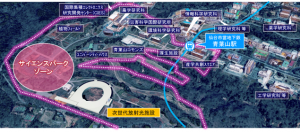
New Aobayama campus map of Tohoku University and the construction site
Establishment of the 3GeV-Class Synchrotron Radiation Source
We are promoting the development of the latest accelerator technologies for the next-generation synchrotron radiation facilities such as high brightness 3 GeV class synchrotron radiation sources.
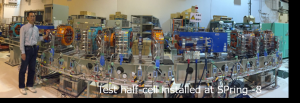
In order to design and build the storage ring, a half of the minimum unit of magnet arrangement was built as a trial. We established the alignment method for the magnet arrangement with an accuracy of several micrometers.
